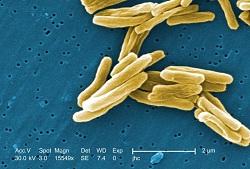Using AI to control energy for indoor agriculture
30 September 2024
Published online 9 August 2011

A review of pulmonary diseases in the Middle East claims the region could have the highest incidence of pulmonary infections in the world.
"The wealth of pulmonary pathologies encountered in the Middle East probably surpasses all other regions of the world," said Atul Mehta, chief medical officer at Sheikh Khalifa Medical City in Abu Dhabi and lead author of the study, which was published in Respirology1.
People living in the region are more prone to respiratory disease owing to the environmental conditions, genetics and lifestyle particular to the Middle East. Last year, a study employing polymerase chain reaction (PCR) on the earliest known Egyptian mummy to receive an autopsy, provided evidence that pulmonary tuberculosis (TB) was a burden on the region thousands of years ago2.
The authors organized the contributing factors into several categories: environmental factors, infections, genetic-idiopathic diseases, sleep disorders, lung malignancies, pleural diseases and miscellaneous respiratory conditions.
Extreme weather variations and allergens from the desert exacerbate asthmatic conditions. Children are especially affected by exposure to cigarette smoke and household allergens. However, a Gallup poll revealed that 25% of people in the Middle East3 smoke cigarettes, which puts it on par with other regions. Socially, the ubiquitous water-pipe and smoking are responsible for pulmonary disease and coronary heart disease. The regular burning of incense is also cited as a pollutant.
The burden of respiratory illness is a drain on both patients and healthcare systems.
"Bronchial asthma is more prevalent in urban areas, especially in children. Pneumonia occurs more frequently where people live in closed spaces, again with children most at risk," says Yaser Abu El-Sameed, pulmonologist at the Sheikh Khalifa Medical City and a co-author of the study.
"Water pipe smoke could affect children in the womb. Secondhand smoke could damage the lungs of children because of the fine size of particle matters emitted from smoking," explains Monique Chaaya, an epidemiologist at the American University in Beirut who has studied the effects of water pipes and maternal smoking. Fine particles settle deeper into the lungs, and children breathe more rapidly than adults, thus inhaling more pollutants.
Multi-drug resistant tuberculosis has a foothold in the region, accounting for 0.9–5.4% of new cases of TB. In 2010, the World Health Organization published a report, Multidrug and Extensively Drug Resistant TB, revealing the rise in its incidence in the Middle East. Pneumonia caused by both viral and fungal infections is also common, with an overall mortality rate of 13%.
A culture of family relatives marrying has resulted in genetic conditions, such as sickle cell disease, Behçet's syndrome and primary ciliary dyskinesia, which can have a significant impact on pulmonary health. Lung cancer is also a common disease.
El-Sameed says there are many ways to decrease the incidence of respiratory disorders, such as offering vaccinations for bacterial influenza and pneumonia. "Physicians can provide patients with medication to help them quit smoking. Counselling should also be offered. Education programmes to improve public health awareness are significant."
If the rise in respiratory disorders is not curbed, it will exact a heavy socioeconomic impact, contend the authors. "The burden of respiratory illness is a drain on both patients and healthcare systems. Respiratory disorders are a major cause of death and disability for many people. The results are lost productivity, missed educational opportunities and extremely high healthcare costs," says El-Sameed.
doi:10.1038/nmiddleeast.2011.101
Stay connected: